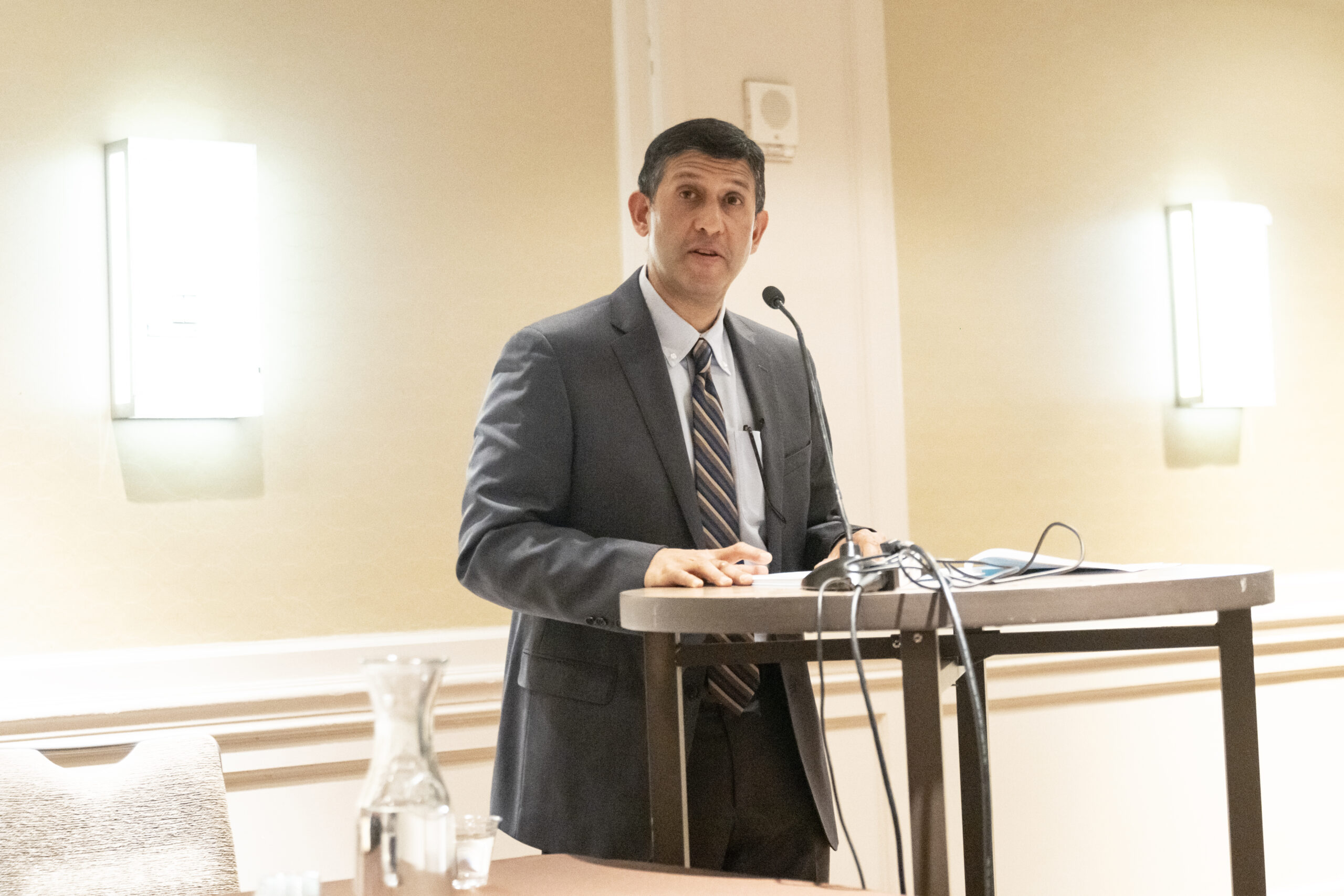Editor’s Note: Following the publication of Russell Olwell’s essay, “History Departments and the NCATE/NCSS Accreditation Process: Time for a Change,” in the May 2006 issue of Perspectives, we received several communications commenting on the article. We are publishing them as a forum on the subject along with the first essay, which was specially written by Margaret Crocco in response to our request to the National Council for the Social Studies seeking comment on the Olwell article, along with essays by Charles Howlett and Larry Frohman.
In recent years, teacher education programs have come under sustained attack from virtually every quarter, and at the same time they have been under pressure to meet the standards for accreditation set by the National Council for Accreditation of Teacher Education (NCATE). In practice, NCATE requires the individual teacher education programs at those institutions seeking accreditation to be accredited by the Specialty Professional Associations that are responsible for setting standards for the individual disciplines, i.e. the National Council of Teachers of English, etc., and NCATE has charged the National Council for the Social Studies (NCSS) with setting standards for the accreditation of social studies teacher education programs. The question, though, is what do NCSS standards, and the accreditation process more generally, mean for departments of history?
In his examination of this question in the May 2006 issue of Perspectives, Russell Olwell came to the conclusion that compliance with the NCSS standards is diluting the sustained study of history within the major and thus doing a serious disservice to both prospective teachers and their future students. In the end, Olwell calls on the AHA to flex its muscles and pressure NCATE to make the AHA, rather than the NCSS, the body responsible for accrediting social studies programs.
The first thing that needs to be said in response is that most states offer certification in social studies, rather than history, because they require schools to teach courses in social studies, not history. Consequently, no call for the AHA to play a greater role in the accreditation process is likely to have much effect unless and until the states revise their curricula and certification requirements. However, as I shall suggest below, the issue is not so urgent because history already serves as the de facto core of most social studies curricula.
Second, Olwell’s arguments depend on a particular reading of the NCSS standards and of the impact of the accreditation process on the history major. However, I would like to suggest here that the relationship between the NCSS standards and the history major may very well be more positive than depicted by Olwell. At my university, for example, the social studies teacher education program has a fairly good relationship to the history department within which it is housed, and we have been able to exploit the synergies between the history major, the university’s general education requirements, and NCSS standards to ensure that our undergraduate students get a strong grounding in history and the social sciences—without either watering down the major or imposing any undue assessment requirements on the history faculty.
Social Studies Standards and the History Major
The NCSS has adopted 10 thematic standards that have to be met by programs offering certification in “broad field” social studies. These standards are: I. Culture and Cultural Diversity, II. Time, Continuity & Change, III. People, Places and Environments, IV. Individual Development & Identity, V. Individuals, Groups & Institutions, VI. Power, Authority & Governance, VII. Production, Distribution, Consumption, VIII. Science, Technology & Society, IX. Global Connections, X. Civic Ideals and Practices. As the NCSS explains, the knowledge underlying these standards is most likely to be taught in courses in anthropology, history, geography, psychology, sociology, etc., respectively. To earn accreditation the organization expects social studies programs to provide evidence, first, that their students are learning the basic concepts of these disciplines and, second, that they are capable of applying this knowledge in appropriate ways in the public school classroom. I do not know of any historian who would seriously object to expecting history majors to understand the basic concepts of these disciplines and be able to incorporate them into their own thinking about society and history. In fact, any historical research and writing that was not informed by these ideas would be impoverished.
These standards pose such a problem for Olwell and others because they fear that the study of these social sciences is becoming a substitute for the in-depth study of history, rather than a supplement to it. If this were necessarily the case and if I felt that NCSS standards and the NCATE accreditation process were indeed incompatible with systematic study of history and habits of mind, then I would be among the very first to sign Olwell’s petition. However, the problems and conflicts described by Olwell are by no means foreordained, and I think that his conclusions in this respect are prematurely gloomy.
On the one hand, secondary school social studies curricula are increasingly taught as recognizable history (or history and geography) courses. Within these courses history serves as the integrating discipline to the extent that, as students progress through the curriculum, the central concepts of the other social studies disciplines are introduced not for their own sake, but rather in specific historical contexts in order to give the students the analytical tools they need in order to think more clearly about specific issues at stake. Consequently, I cannot agree with Olwell’s claim that only one of the 10 standards actually supports historical thinking, while the others represent distractions from it. One thing that university faculty tend to overlook is that students are not born with an innate understanding of what social classes are, how economies operate to distribute available resources, or how culture or geography can shape a society’s perceptions of the challenges it faces and the options available to its members. The NCSS standards serve as a useful reminder that the elementary concepts that college-educated adults operate with automatically have to be taught to secondary school students in a much more explicit manner than is the case with college students.
On the other hand, it is perfectly possible to ensure that prospective teachers take at least the minimum social science coursework needed to satisfy NCSS program standards without in any way undermining the integrity of the history major. At many schools, university general education requirements usefully complement the requirements of the history major, which itself frequently demands that students take one or more courses in related social science fields.
While one might legitimately worry that all of these requirements will pose an undue burden on students, in practice we have found that it is much more a question of advising than of curriculum design. Moreover, this potential problem can be diminished even further by undertaking to meet some of the social science requirements (especially the more difficult to meet interdisciplinary standards 8 and 9) within the framework of the history major. While many schools have had problems meeting the NCSS standard in science, technology and society, this has been less of a problem for us because the university has imposed a general education requirement in precisely this area. So, rather than struggling simply to meet the standard, we have been able to focus on meeting the standard in a way that will actually be of use to our students, and what we have done is to encourage our students to satisfy this general education requirement through one of the surveys in the history of science, technology and medicine that are already taught through the history department. In this way, the NCSS standards can be seamlessly incorporated into the major. Similarly, since Stony Brook does not have a geography department, we chose to make a virtue out of necessity, and the history department worked with us to create a world history and geography course that satisfies the NCSS geography requirement and now regularly draws a large number of students who are not enrolled in the teacher certification program.
In sum, I do not think that the NCSS standards are essentially incompatible with the teaching and learning of history at either the secondary or university level or that they are irreconcilable with the in-depth study of any of the other social science fields through which students can pursue social studies certification. In fact, one can make a plausible argument that they strengthen it. Thus, it should not be surprising that many school districts are showing a pronounced preference for history majors over graduates in the other social science disciplines and that graduates in all of these disciplines are increasingly preferred over education majors.
The Assessment Trap
As part of the NCATE/NCSS accreditation process and as a result of the emphasis upon the use of assessment data for program improvement, teacher education programs are expected to provide evidence showing how well their students are learning the content knowledge they are being taught at the university, how well they can teach the key concepts of the discipline to secondary school students, and—as part of the new push for accountability in education—what impact their instruction is having on secondary student learning. History departments and history faculty are only concerned with the first of these three elements. However, Olwell’s claim that, in order to gain accreditation, history departments must teach the 10 “vague” NCSS strands in their courses is misleading and unhelpful.
Any well-designed history course will address almost every one of the 10 NCSS standards. The problem, though, is that the NCSS requires that schools provide information showing how well students are learning the content pertaining to each of the 10 discrete standards, and the organization insists that a single course grade can not provide adequate evidence of how well students are learning the many different standards that may be addressed by the course. To a certain extent, the solution is a simple one: to require teacher education students to take courses that are so closely aligned with the individual NCSS standards that the course grade will provide clear evidence of how well the students are mastering the body of knowledge lying behind the individual standards. For example, the final grade in a geography course should provide satisfactory evidence for how well a student has mastered the basic concepts of geography. The reporting and analysis of course grades can be done by institutional research without imposing any additional requirements on the history faculty, and Olwell’s warning that the accreditation process requires history faculty to teach all of the thematic standards in each of their courses misses the essence of the process—at least in the vast majority of cases.
Those departments and schools that cannot (re)design their curricula in this way find themselves in a much more difficult situation. In these instances, content area faculty may find themselves pushed by the education school to identify within their courses specific modules or units that do align adequately with the individual NCSS standards, assess student knowledge in these areas, and then report this data on a regular basis for all of the teacher education students enrolled in their courses. This is the nightmare from which we are all trying to escape. Given the choice between submitting to such regimentation and either creating new courses to meet NCSS standards or revising the content area course requirements for the teacher education program, most schools are opting for the latter.
The Use and Abuse of Standards
Olwell also espies a conflict between state standards and those of the NCSS. This conflict is, I believe, more imaginary than real. As I noted above, social studies curricula are almost universally history-based. Student teachers do not—or at least should not—set out to teach a lesson on geography, economics, or the concept of class. Rather, what they should do is identify an important event, development or question in the subject they are teaching and then design a lesson that will help the students unpack the topic and articulate the reasons for its importance.
When approached in this way, the NCSS standards are useful because they help history majors learn how to go about this process. For example, in a model lesson that I often teach, I use the building of the transcontinental railroad to illustrate the economic, social and political changes set in motion by the creation of a national market. While every student will have a latent but probably inchoate understanding that railroads played an important role in 19th-century American history, they may not be able to articulate the diverse reasons why this is so. What the NCSS standards do is make the student sensitive to the various ways in which this significance can be unpacked and articulated by helping to focus on the economic processes that followed upon the construction of the railroads, the impact of these processes on class, family and community structures, the relations of political power that made possible the building of the railroad and that were in turn reinforced by the railroad, the reform and social protest movements that arose in response to this chain of social change, and so on. Thus, the NCSS standards should serve not as a prescription or a straitjacket, but as a guide to help prospective teachers—and, through them, public school students—learn how to engage in those forms of historical and social analysis that we all believe to be uniquely valuable.
In one respect, though, Olwell is absolutely right. History is vast and complex, and the NCSS standards do not help our students figure out what is important to teach or why. If we want our students to be able to create a challenging curriculum, rather than slavishly following the textbook, then they need the breadth and rigor that comes from in-depth study of the discipline. The state standards mentioned by Olwell represent an attempt by the states to spell out what is important enough to be included in the curriculum, and these state curricula, in turn, are used as the basis for teacher certification tests and high school exit exams.1 Ultimately, I think that the NCSS standards and the various state and national history curricula can complement each other in productive ways and that we need not see ourselves faced with an either/or choice.
It should be noted, however, that, in a hasty and ill-conceived effort to meet the minimum requirements for accreditation, a number of social studies education programs have redesigned their methods courses and that these courses now undertake, at least on paper, to teach the students a different standard each week with no obvious concern to ensure that they know how to think in a sustained manner about society and history. Although it is difficult for an outside observer to know what goes on in the social studies methods classroom, this is a disturbing trend, though it may well be that such syllabi are just a show put on for the benefit of the NCSS. Nevertheless, one needs to be wary of letting the tail wag the dog and falling into the trap of mistaking knowledge of the NCSS thematic standards for the systematic, in-depth study of society and history.
Ultimately, I think that we should view the NCSS thematic standards more as a pedagogic device for helping prospective teachers learn how to engage in those kinds of historical and social analysis that professional historians engage in in a largely unconscious manner, rather than viewing them as a worm eating away at the heart of the history major. Yes, accreditation requirements do impose some curricular constraints upon us. However, as I have tried to show here, we have been able to turn most of these requirements to our own advantage, and they have not diluted the major to any appreciable degree. To the extent, though, that there is a conflict between history and social studies, it is not one that is created by the NCSS accreditation requirements or is inherent in the NCSS standards. With a modicum of amity on both sides, history departments should have few problems—either intellectual or practical—in negotiating the NCSS accreditation process.
Note
- Even though New York State has an extensive scope and sequence for social studies, I have found the National History Standards published by the National Center for History in the Schools (UCLA) to be extremely useful because of the way they combine a challenging history curriculum with practical suggestions on incorporating these ideas into the social studies classroom in a grade-appropriate manner. See Ross Dunn and David Vigilante, eds., Bring History Alive. A Sourcebook for Teaching World History and Kirk Ankeney et al., eds., Bring History Alive. A Sourcebook for Teaching United States History (National Center for History in the Schools, UCLA). [↩]
Larry Frohman, a historian by training, is the director of the social studies education program at SUNY Stony Brook, where he is also the coordinator of assessment for the NCATE review process. He has been a program reviewer for NCSS, and is the book review editor of the journal, Social History.


